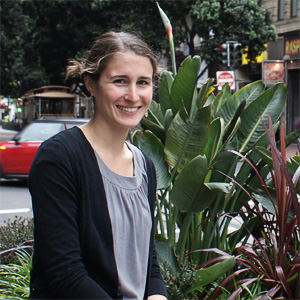 As urban populations continue to grow, obtaining and preserving spaces for urban gardens is becoming increasingly more challenging. To accommodate residential growth, as well as industrial and technological advances, over time cities have introduced new layers of infrastructure to the urban fabric: culverting natural creeks, constructing freeways and rail lines, and infilling. The resulting palimpsestic urban fabric is speckled with remnant spaces – fragments or “leftovers” existing on, above, below, or in-between dominating infrastructural elements. Historically overlooked as usable space, remnant spaces may become the only remaining pieces usable for urban gardens in growing cities.
As urban populations continue to grow, obtaining and preserving spaces for urban gardens is becoming increasingly more challenging. To accommodate residential growth, as well as industrial and technological advances, over time cities have introduced new layers of infrastructure to the urban fabric: culverting natural creeks, constructing freeways and rail lines, and infilling. The resulting palimpsestic urban fabric is speckled with remnant spaces – fragments or “leftovers” existing on, above, below, or in-between dominating infrastructural elements. Historically overlooked as usable space, remnant spaces may become the only remaining pieces usable for urban gardens in growing cities.
Sarah Moos ’09’s work investigates remnant spaces in direct relation to their context. She proposes a method for identifying remnant spaces within the urban setting and not only designing each “left over” as an individual urban garden, but as a critical portion of the larger urban landscape. By analyzing and designing spaces within the Islais Creek Watershed of San Francisco, California, USA, Moos strives to suggest a method for establishing resilient urban gardens on remnant spaces as part of an urban greenway that provides healthy living environments for adjacent residents.
Moos is a graduate student at the University of California, Berkeley completing a dual Master’s degree in landscape architecture and city & regional planning with an emphasis in urban design. She received her MLA in 2012 with ASLA honors (American Society of Landscape Architects). She completed her Master’s design thesis on remnant spaces in San Francisco’s southeastern neighborhoods, proposing operational strategies to transform derelict sites into active and biodiverse public open spaces that will improve overall livability, connectivity, and ecology throughout rapidly developing environmental justice communities. Moos currently works as a design contractor at Bionic, a landscape architecture and planning firm in San Francisco, CA. The firm focuses on projects of all scales and emphasizes inventive solutions that strategically combine landscape, infrastructure, technology, architecture, transportation, ecology, politics, economics, and social factors.
Moos has received multiple awards for her landscape and urban design proposals: the 2011 Piero N. Patri Fellowship for urban design at SPUR (San Francisco Planning + Urban Research Association); honorable mention in the ULI (Urban Land Institute) National Design Competition for pedestrian linkage; the Thomas Church Design Competition for a re-envisioned transit station; and the San Francisco Garden Competition for residential design. Moos graduated with honors from Scripps College in 2009, receiving a bachelor’s degree in studio art and environmental analysis. She was also awarded the Slocum Book Collection Award in 2009 for her advanced personal library entitled “Landscaping a Pathway Towards a Career in Environmental Design.”
Listen Online

